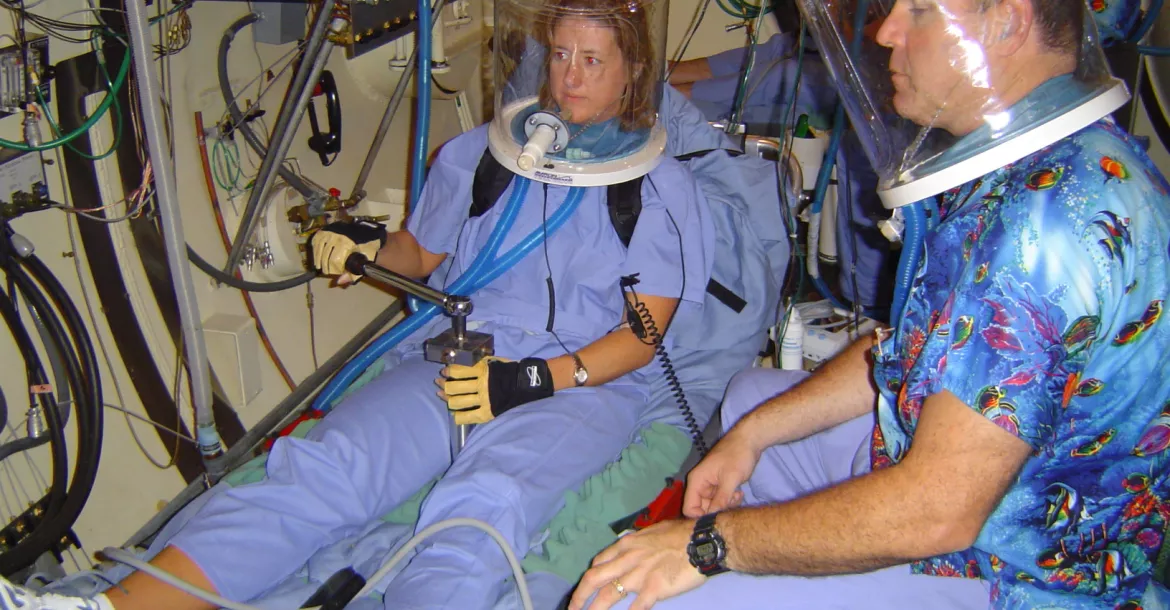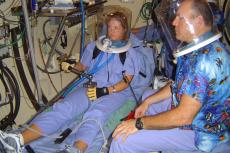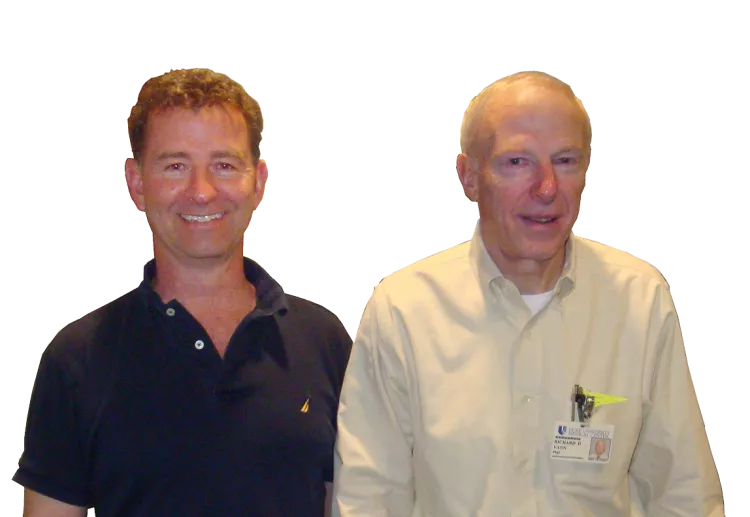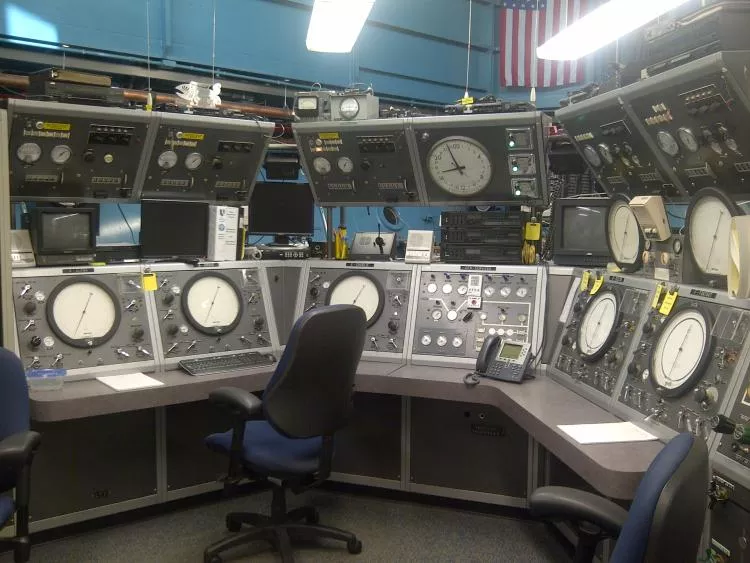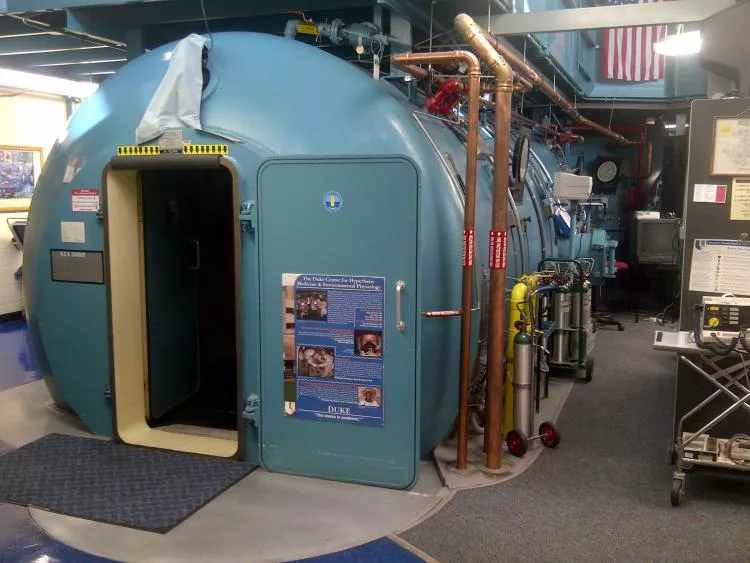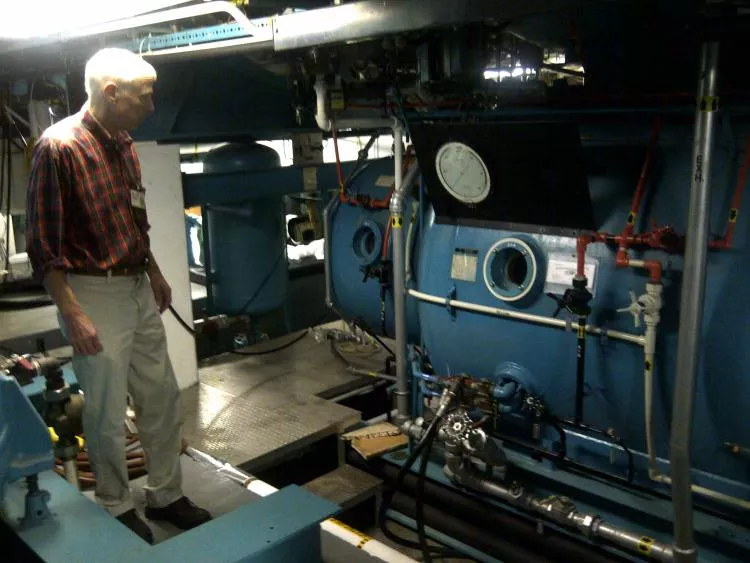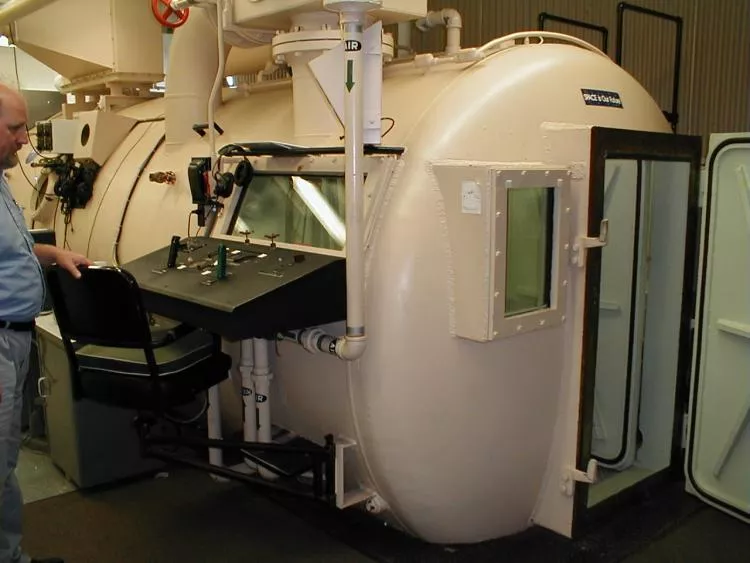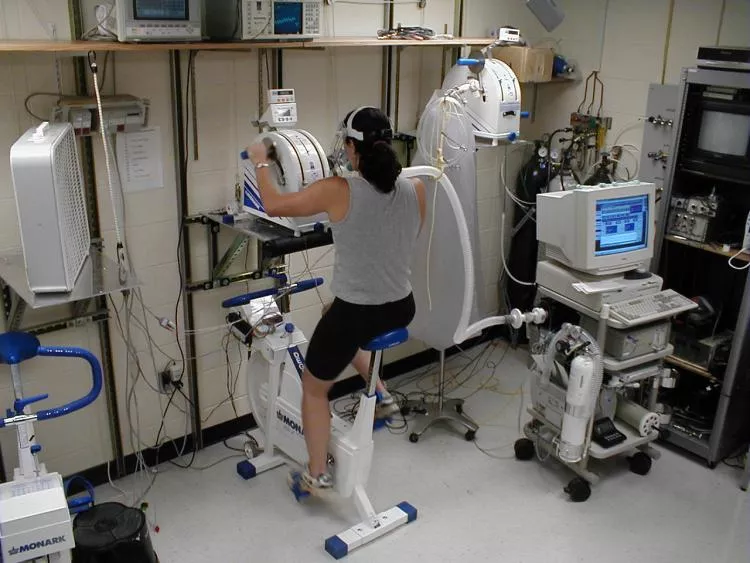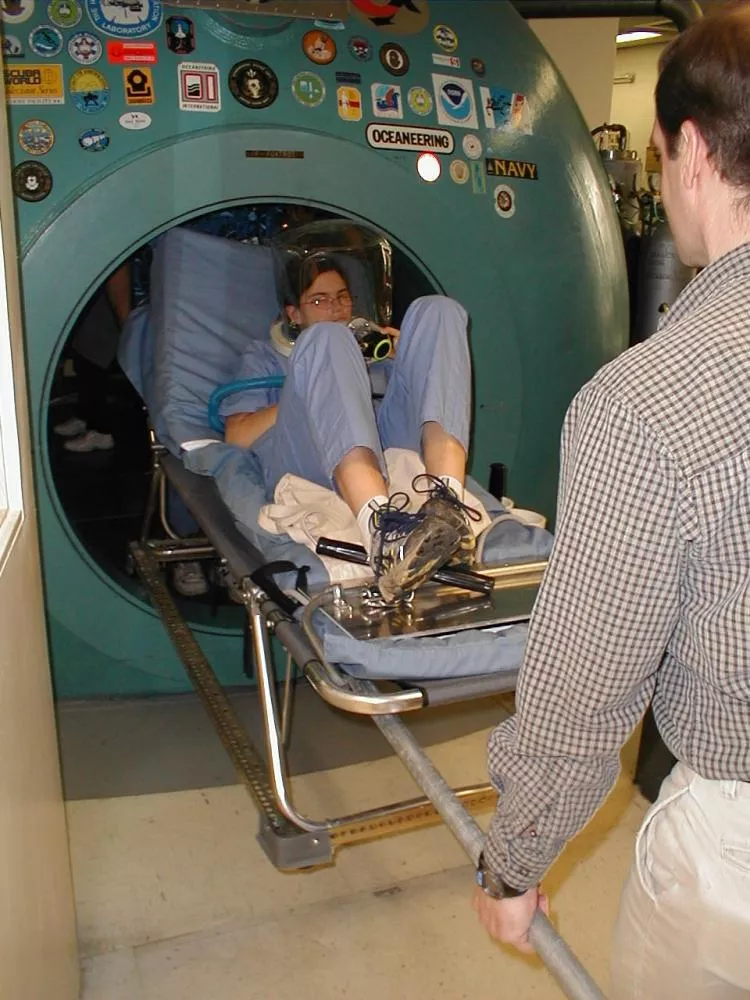Preventing decompression sickness in astronauts
Duke research team wins NASA award
A research team at the Duke University Hyperbaric Centre, (North Carolina, USA) has won a Johnson Space Center (JSC) Group Achievement Award from NASA. The Durham-based team comprising Dr Neal W Pollock, Dr Richard Vann, Mike Natoli and Dr Richard Moon developed an in-suit light exercise pre-breathe regimen to prevent decompression sickness from developing in astronauts.
Although it might not seem immediately obvious, there is a strong link between astronauts, rebreathers, diving physiology and physics. A space suit is effectively an oxygen rebreather with the contents of the suit recirculated through a CO2 scrubber. However, the helmet doesn’t suffer the same CO2 retention problems that some diving helmets can, mainly because the gas is far less dense, therefore it circulates easily around the system.
“When an astronaut transitions from Space Station pressure (1 bar) and dons a space suit (0.29 bar), the pressure on them drops by 0.71 bar,” stated Pollock. “It’s the same effect as instantly going from ground level to 1,000 feet above Everest.
A space suit is effectively an oxygen rebreather
"Consequently, one of the dangers of spacewalking is that decompression sickness will result if there is no intervention or treatment. Although the astronaut hasn’t been diving, he does have nitrogen in his tissues—in equilibrium with the content at ground-level pressure.
With an immediate drop in pressure, the gas comes out of solution forming bubbles, and the astronaut can possibly experience symptoms of decompression sickness, just like a diver. We needed to wash out nitrogen from the astronauts’ tissues by having them breathe pure oxygen—an old trick used since World War II by bomber and fighter crews.
"The standard protocol was to breathe O2 for four hours prior to decompression (pre-breathe) to reduce nitrogen to a much lower level. This protocol was problematic, however, in that it made the length of spacewalking days longer than allowed by NASA, and consumed limited high pressure oxygen stores. Hence, our goal was to develop new protocols to speed nitrogen elimination during pre-breathe by combining oxygen breathing with controlled exercise. (Adding exercise into the equation increases the blood flow, which results in a faster nitrogen washout, but too much or too aggressive exercise can promote bubble formation and increase risk—this is the dualism of exercise).
Although the astronaut hasn’t been diving, he does have nitrogen in his tissues.
"The same principle regarding blood flow actually applies to divers as well, but again careful thought must be applied. If a diver exercises whilst descending or at depth, the inert gas absorption will be accelerated, effectively increasing the decompression obligation. A diver who does light exercise during decompression will accelerate inert gas elimination from his or her tissues, just like an astronaut who breathes oxygen.
Too much exercise during decompression, however, can increase bubble formation and the risk of decompression insult, so caution must be employed. This is definitely not a case of 'if a little is good, more is better'—'more' can get you into trouble, and there is no simple way to optimize strategies."
A multi-centre team developed and tested four protocols initially, resulting in the first protocol approved for flight (and a previous NASA award). The team included research groups from NASA Johnson Space Center, Duke University, University of Texas at Houston and the Defence and Civil Institute of Environmental Medicine [DCIEM] in Canada, and consultants from the U.S. Air Force. Duke subsequently took the lead in testing five more protocols, with one also approved for flight.
"We were all delighted that the new pre-breathe protocol, known as 'ISLE' (in-suit light exercise) worked successfully when it was tested in orbit during the STS-134 / ULF6 mission.” It was this success that resulted in the current award. “This has very much been a team effort, and it’s been a long project,” stated Vann. “The genesis of this concept came about in the 1980s.
One of the dangers of space walking is that decompression sickness will result if there is no intervention or treatment.
"I agree that exercising in space sounds quite straightforward to most people, but it does come with its own set of special challenges. The first operational trials by NASA took place during the shuttle missions when astronauts used exercise equipment whilst breathing oxygen.
The equipment was complicated since it had to be built to avoid transmitting vibrations into the spacecraft during use. Ultimately, a simple cycle ergometer became a very complicated 'CEVIS' (cycle ergometer vibration isolation system).
The complexity proved to be logistically cumbersome, failing several times on orbit. Therefore, our next task was to develop a protocol that didn’t involve extra equipment. The logical step was for the astronauts to exercise whilst breathing oxygen in the space suit.
"The effect of gravity on Earth is our normal reference standard for exercise. After we lift a leg up, it falls back naturally. In space in zero gravity, when we lift a leg it keeps on moving. So, exercise in microgravity is different. The astronaut must be anchored to the wall, and then work to initiate limb movement, to stop it at the end of the movement range, and to initiate movement in a new direction.”
Pollock and Vann also work at DAN Headquarters in Durham, respectively as Research Director and Consultant. They are two members of the team behind Rebreather Forum 3. ■

